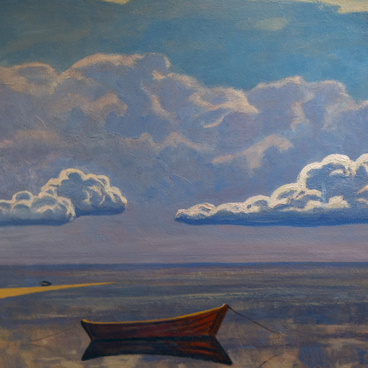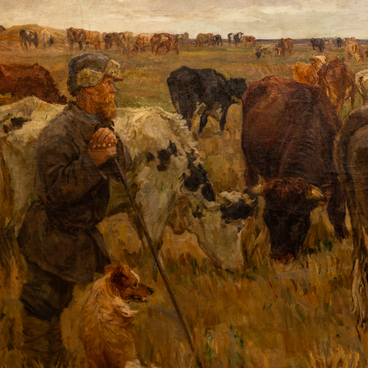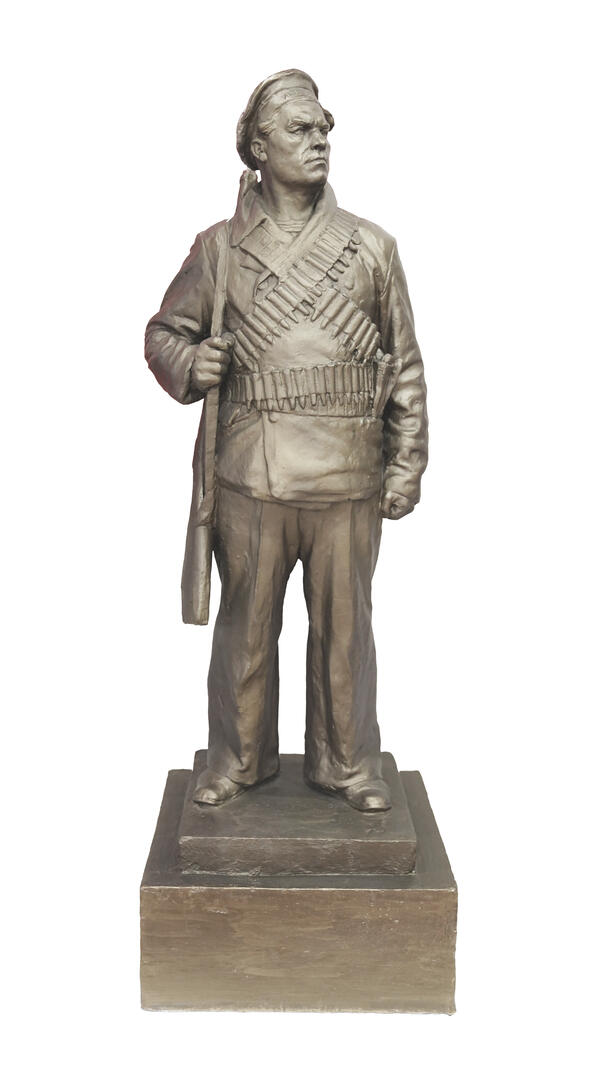He paid particular attention to creating a deeply profound portrait, reflecting the psychology and the intelligence of a person.
There was one more reason why statues by Vladimir Tsigal stood out from the works by other Soviet sculptors. In his statues, he praised not only Soviet patriots: being greatly interested in the idea of solidarity of peoples, Tsigal also depicted representatives of other cultures.
He reacted to the events of the Chinese Civil War and the founding of the People’s Republic of China (PRC) in 1949 by creating a portrait of a young Chinese volunteer wearing the uniform of the People’s Volunteer Army. Tsigal depicted the soldier holding his head up proudly, with a direct look and tight lips. This portrait embodies courage and perseverance.
The statue is made of aluminum. Art historians do not have information about the step-by-step creation process. As a rule, a sculptor first creates a model made of various materials (wax, plasticine, and others), and then shapes a casting mold for the model which can later be used several times. It is known that Tsigal created at least two versions of the ‘People’s Volunteer’.
Initially, Tsigal intended to make this statue part of a sculptural triptych. He planned to create statues of a Chinese patriot, an African fighter against colonial oppression, and a Russian defender of the Fatherland. However, so far, the only known work from this triptych is this statue in the Yekaterinburg Museum collection.
The artist’s legacy includes many other statues dedicated to various nations. For example, the Perm State Art Gallery houses the 1953 ‘Ambassador of Peace’, and the collection of the Yekaterinburg Museum also contains the 1951 ‘Woman from the Democratic People’s Republic of Korea’.





